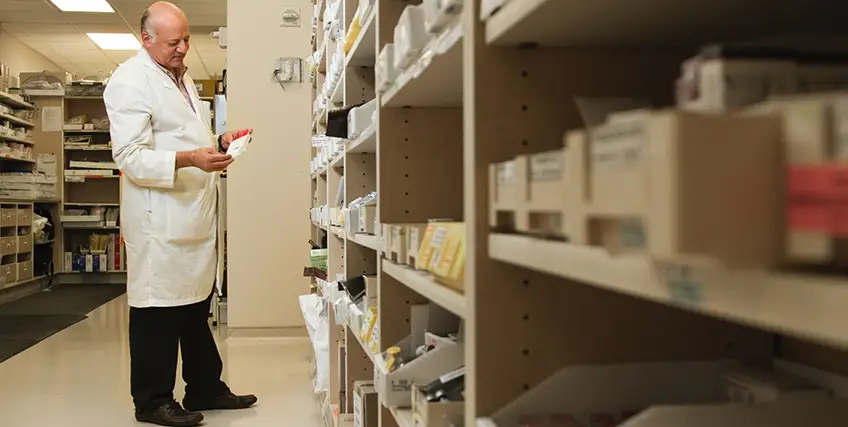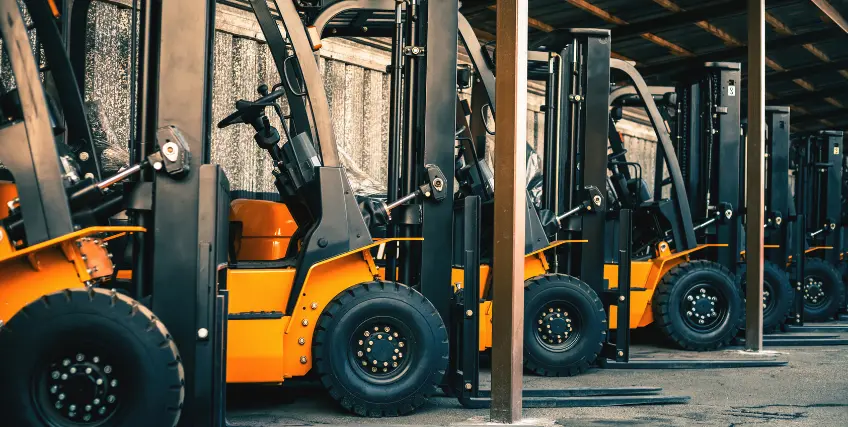Definitive Guide to Equipment Leasing for Small Businesses
December 30, 2024 | Last Updated on: December 30, 2024

Depending on your small business, equipment might be essential to operations. Equipment is often costly, so businesses may need help to purchase the equipment they need. In some cases, leasing equipment may be a better option.
Equipment leasing allows a company to significantly reduce the cost of acquiring essential equipment. Depending on the leasing option, you can avoid a down payment and have relatively new equipment by turning in used equipment for newer models at the end of the lease. Much like a car lease, equipment leasing offers a compelling financing solution for businesses with significant equipment needs.
In this article:
- How equipment leasing works
- Differences between renting equipment and leasing equipment
- Alternative options for equipment financing for business
How does equipment leasing work?
Small businesses may have a range of equipment needs, including manufacturing machinery, computers, furniture, kiosks, kitchen equipment, and much more. Most business owners don’t have the funds available to purchase equipment outright. By leasing equipment, you disperse the cost of paying for equipment over a set amount of time, allowing you to maintain your business’s cash flow better.
With equipment leasing, a small business owner pays a fixed interest rate over a specific period. The interest and fees are built into the payment. Contracts to lease equipment usually cover three to ten years, depending on the equipment you will be borrowing.
Types of equipment leases
There are two types of leases: operating leases and finance leases.
If the type of equipment you are leasing is small and not of exorbitant value, you’re more likely to enter into an operating lease agreement. In an operating lease, a business owner rents an asset from a lessor, but not under terms that transfer ownership of the asset to the lessee. During the rental period, you have unrestricted use of the equipment, but you’re responsible for its condition.
With a finance lease, the small business owner identifies the equipment they need. Then, the finance company from which you lease the equipment buys the asset. Then, you enter into a contract with the lessor that grants you access to the equipment during the life of the lease.
While you, the small business owner, use the equipment for your company, you make regular payments to the lessor for the right to use the equipment. The lessor recovers the cost of the assets plus interest. When the equipment financing lease agreement is up, you can purchase the equipment outright.
Once you enter into a contract for a finance lease, you cannot cancel the lease–which is often referred to as a full-payout lease or a closed-end lease. The lease payments recover most of the equipment cost for the lessor together with interest on the investment. Financial leases must be capitalized as a liability on the lessee’s balance sheet.
Before entering into a finance lease, it’s a good idea to consult with a qualified, certified public accountant (CPA) who knows about equipment funding because the terms can be complicated.
Pros and cons of equipment leasing
Purchasing and maintaining equipment can strain the expenses of many entrepreneurs. Leasing offers more flexible equipment financing for businesses, but it also has drawbacks.
Pros
- Less expensive: Leasing arrangements tend to be less expensive — both monthly payments and upfront — than purchase agreements, especially if you’re leveraging used equipment financing.
- Cutting-edge equipment: Leasing equipment allows you to use new, cutting-edge equipment for a period of time and have the flexibility to end a lease and get new equipment when it’s available. This avoids the dual costs of equipment obsolescence and depreciation.
- Reduced maintenance costs: Some commercial equipment leases come with service agreements or service add-ons to simplify maintenance and care for equipment.
- Path to purchase: Just because you lease equipment doesn’t mean you can’t still buy it later. Many lease agreements allow small business owners to purchase the equipment outright at the end of the lease term for a depreciated price.
Cons
- No ownership: The major con of equipment leasing is that you don’t own the equipment and will have to return it at the end of the lease term. This can risk gaps in production or give you a little buyer’s remorse if the equipment is still working well and you don’t feel like you need to pay more for a new model.
- Maintenance difficulties: Having a service agreement may save you money, but it also makes you beholden to the lessor, who may not be motivated to resolve maintenance issues.
Alternative equipment financing for business
Equipment leasing is a good option for business owners who want to retain flexibility when acquiring equipment. But it’s not the only equipment funding option available.
Renting equipment
People often use the terms “rent” and “lease” interchangeably. However, there are significant differences between renting and leasing equipment.
A rental time frame is much shorter than that of a lease. Usually, equipment rentals are for short-term periods, paid on a month-by-month basis. That makes renting equipment for your business easier to get out of if something’s not working out properly, but there are also some clear advantages to leasing.
While the terms of a month-to-month rental might seem more flexible, monthly repayments can be higher for a rental than with an equipment lease. And, at the end of a rental period, you cannot purchase the equipment as you might with a lease. You either have to give the equipment back or renew the agreement for as long as you want or need to use the equipment. On the other hand, when you agree to equipment leasing, you generally have the option to purchase the equipment at the end of the lease term.
Equipment loans
An equipment loan uses the equipment itself as collateral to secure the financing. That means the lender may seize the equipment if you default on the loan.
Both traditional lenders and online lenders offer equipment loans with competitive interest rates. Usually, a business owner makes a down payment for the equipment loan, and a lender finances the rest of the purchase price. To qualify, business owners must meet credit score, time in business, and annual revenue requirements, and submit a loan application.
You can use a loan for both new or used equipment financing and for most types of equipment. A small business operating on a limited budget may prefer to finance equipment for the long term rather than deal with the uncertainty of having to renew or get a new lease for essential equipment.
Assets that are less likely to depreciate much are suitable subjects for equipment financing.
Benefits of equipment loans
Equipment loans have a number of benefits, some of which are similar to those you’d get with equipment leasing. Some of these benefits include:
- Fast approval: Equipment leasing has fast approval times, too, but as far as loans go, equipment loans are some of the fastest to fund, making them better options than term loans or opening a line of credit to make a purchase.
- Financial flexibility: Like an equipment lease, fixed monthly payments allow your business finances and liquidity more effectively to support business needs.
- Payment flexibility: Depending on the lender, you may be able to select monthly, quarterly, biannual, or annual payments. This gives you some extra flexibility with the loan if you’re a seasonal business or you’re navigating a tough financial stretch.
When mulling financing options, it’s important to compare equipment loans and equipment leasing. If you’re concerned about equipment becoming outdated or maintenance costs as equipment ages, you may prefer equipment leasing.
Final Thoughts
Equipment leasing offers business owners some additional flexibility when it comes to equipment funding. That said, there are benefits to purchasing equipment outright with an equipment loan or renting equipment for a short time. If you’re considering equipment financing for business, make sure you understand your options and the benefits of different financing options before you sign anything.
FAQs on Equipment Leasing
What is equipment leasing?
An equipment lease is an arrangement in which you pay a fixed monthly payment, plus interest, to own and operate a piece of equipment for a period of time. Since you do not own the equipment outright, you must return the equipment or choose to buy it at the end of the lease agreement.
Can you lease used equipment?
Yes, you can lease used equipment. If you don’t need brand new equipment, this can be a good way to save a little money.
What is an alternative equipment financing for business?
A couple of alternative financing options for equipment financing include equipment loans, renting equipment, or purchasing equipment with term loans, business lines of credit, or other loans.
What are the benefits of equipment leasing?
Equipment leasing allows a business to get new equipment without paying full price. It's a good way to leverage cutting-edge equipment while making just a monthly payment. At the end of a lease, you usually have the option to purchase the equipment outright, giving you additional flexibility.
Frequent searches leading to this page
equipment funding, used equipment financing, equipment financing for business




